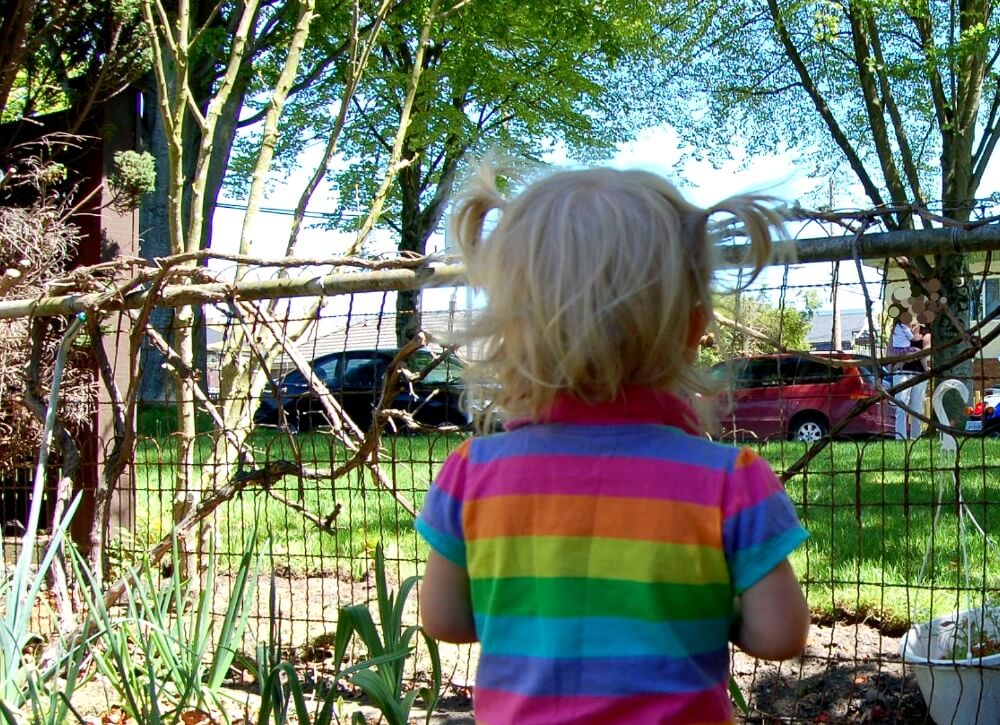In the architecture of public education, few concepts are more universally praised—or more fatally misunderstood—than independence. Cloaked in progressive language about agency, resilience, and growth, the independence mandate is often wielded less as a vision for liberation than as a strategy of withdrawal.
For disabled students, particularly those who have learned to endure, mask, or survive on thin relational scaffolding, the language of independence becomes a trap. It is used to rationalise the quiet reduction of support, to frame neglect as empowerment, and to recode distress as success.
As disability justice scholars have long argued, systems that use a child’s adaptation as evidence of reduced need engage in a kind of institutional sleight of hand.
- Alison Kafer critiques the progress-driven logic of cure, urging a shift toward political time rooted in interdependence.
- Mia Mingus exposes the coercive dynamics of forced intimacy and unpaid care labour, naming how disabled people are often made responsible for the emotional wellbeing of others.
- Simi Linton challenges the demand for assimilation, reframing disability as a political identity to be claimed rather than an individual failing to be managed.
- And Leah Lakshmi Piepzna-Samarasinha speaks of the deep psychic injury inflicted when disabled people are praised only when they mask, care, or remain silent.
These thinkers teach us that when support is framed as temporary, conditional, or to be outgrown, the inevitable outcome is abandonment—especially for those who try the hardest to endure.—disappearing both the labour of coping and the support that made coping possible.
This essay explores how that ideology played out in one classroom, where a disabled girl named Jeannie was repeatedly praised for her growth—until that growth became a pretext for her abandonment.
-
Post-COVID rise of blended classrooms in BC elementary schools
In British Columbia’s elementary schools, multi-grade or “blended” classes (where students from different grade levels learn together) have become more prevalent in the post-COVID period. Educators report that shifting enrolment patterns and funding pressures after the pandemic have led schools to organise more…
From celebration to coercion
When Jeannie began to use language to express her emotions more precisely, to self-advocate more clearly, and to participate selectively in learning, her educators treated these signs as proof that she no longer required significant accommodation.
Her classroom remained deeply unsupported: her teacher publicly acknowledged that over 70% of her attention went to helping a boy with externalising behaviours regulate. Still, Jeannie was expected to increase her own capacity for learning engagement, group participation, and classroom compliance without any increase in resources.
Most revealing was the school’s insistence that Jeannie continue working with the kindergarten class, despite her explicit statements that it made her uncomfortable and that she felt manipulated.
What had begun as a supportive relational pairing—an opportunity for Jeannie to feel competent, calm, and valued—morphed into a fixed institutional expectation that extracted care from her regardless of her discomfort. Over time, it became clear that the school was using Jeannie’s time in the kindergarten class as a workaround—an unpaid break substitute that conveniently didn’t require staff supervision.
While her ADHD and autism meant she rightfully needed a regulated, sensory-considerate break space, the school used this caregiving as a way to avoid allocating resources.
When Jeannie refused to continue, they resisted, because it meant they would either have to leave her unattended or assign staff—and they claimed neither was feasible. Their unwillingness to request additional support staff, paired with their insistence on masking the issue as a compliment (“you’re so good with the younger kids”), created a manipulative dynamic that relied on coercion to fill the gap. It was, ultimately, an economic pressure driving a pedagogical betrayal.
And Jeannie had to become visibly angry, deliberately withdrawn, and emotionally cold before her refusal was finally respected. Her trust was transformed into obligation. Her consent was presumed. Her refusal was pathologised. What she experienced began to feel disturbingly close to forced child labour—enough so that her parent began to wonder whether a union complaint would be necessary.
Consent presumed, capacity extracted
This is how the independence myth works. It begins in praise: you’re doing so well. It morphs into reward: we think you can handle this. And then it curdles into pressure: why aren’t you coping now? The system that once acknowledged your distress now sees your refusal as ingratitude. The very effort that signalled growth becomes the justification for assigning you more responsibility and less care.
Jeannie’s expressions of discomfort were overridden. Her requests to step back were interpreted as behavioural resistance rather than clear, declarative self-advocacy. She was punished for her clarity. The school had constructed a narrative of independence and needed her to keep playing her part in it. Her autonomy was valuable only when it aligned with institutional convenience.
The pedagogical betrayal
The consequences of this betrayal were profound. As Jeannie’s consent was bypassed and her emotional labour ignored, she began to retreat from the classroom. She stopped engaging in activities and sat in the hallway. She understood, with quiet precision, that the adults who celebrated her voice would use that voice to justify her exploitation.
When she was placed with the kindergarten class—praised for her nurturing presence, celebrated for her ability to help—it came at the expense of her own intellectual and developmental needs. While her peers were engaged in age-appropriate learning, Jeannie, an intelligent child, was sent back to kindergarten.
The school’s failure to provide suitable support effectively infantilised her, redirecting her from academic stimulation toward caregiving labour against her will. Over time, she began to internalise this substitution. Though she has said she never wants children of her own—having watched the toll parenting and advocacy have taken on her mother in a world not designed for neurodivergent people—she sometimes dreams of being a teacher or running a daycare, because that is the primary stream of positive feedback she has received from school.
This is how schools create learned helplessness in disabled children. Jeannie has begun to conclude, despite abundant evidence to the contrary, that she is stupid. And this belief is not the result of her abilities, but of the way those abilities have been ignored, undermined, or made irrelevant by institutional design.
Her verbal fluency, insight, emotional precision, and creative strengths are routinely sidelined in environments that deny her sensory, cognitive, and relational support. She has not failed to learn—she has been taught that asking for help is shameful, that struggling means she is less, and that her presence is only valuable when it meets the needs of others.
The institution has given her two choices: disappear or perform. When praise is directed only at caregiving, when her time is spent soothing others rather than pursuing her own learning, when boundaries are ignored and discomfort reframed as growth—she learns to stop asking. She learns to endure. What Jeannie needed was scaffolding, stimulation, and relational safety. What she received was a pedestal and a task—perform emotional labour or go without support.
-
Joy is rationed for disabled kids in school
When disabled children are excluded from field trips, they are being punished for their needs. These joyful, formative experiences become conditional—offered only to those who mask well, follow rules, and cause no disruption. In British Columbia, this widespread practice violates both law and…
Clarifying coercion: when praise masks pressure
It would be easy, perhaps too easy, to mistake this critique for a dismissal of caregiving or early childhood education—as though these forms of labour were inherently lesser, or unworthy of praise. But the problem was never that Jeannie helped younger children. It was that she was expected to do so indefinitely, without meaningful support, without compensation, without reciprocal benefit, and most critically, in defiance of her clearly expressed boundaries.
Had this been a structured, time-limited, and inclusive initiative—one in which all students, including boys, rotated through relational learning opportunities—it might have held real pedagogical value. But Jeannie was not invited; she was retained. She was selected because she masked well, because she had been socialised into care, because she had a record of regulating others with grace. Her time with the kindergarten class was framed as an honour, as an opportunity, as an enrichment. In truth, it functioned as a staffing workaround, a behaviour management tool, and eventually, a quiet form of coercion. It was never truly optional. And when Jeannie began to express discomfort—first gently, then explicitly, then with open resistance—the institutional response was not accommodation, but escalation of praise.
Jeannie’s experience also reflects a broader pattern of siblingification: the compelled adoption of caregiving roles within peer or family systems when adult support is absent or insufficient. From a young age, Jeannie had shown skill in diffusing conflict and attending to her autistic brother’s needs—skills born of love, necessity, and deep emotional intelligence. These same qualities, observed and admired by school staff, became institutional currency. Her ability to support neurodivergent children was celebrated, and then exploited. What began as attunement became assignment. What had been familial responsibility was institutionalised as an unpaid role. She became the behavioural stabiliser—a child with her own unmet needs, tasked with ensuring the cohesion of others.
This, too, is what Leah Lakshmi Piepzna-Samarasinha names: the extraction of emotional labour from disabled people, especially in feminised forms—soothing, calming, absorbing chaos—performed invisibly, without acknowledgment, while the person’s own exhaustion and need for care are systematically overlooked. In schools, this extraction is rarely named for what it is. Instead, it is wrapped in euphemism: she’s such a natural leader; she has such a big heart; she’s a helper. But when a child finally resists the role—when she says no, or disengages, or withdraws that care—she is cast not as self-protective, but as defiant. She is framed not as boundary-honouring, but as disobedient. What she is rejecting, though, is exploitation. What she is reclaiming is autonomy.
The austerity logic of blended classrooms
In theory, mixed-age classrooms can offer rich relational learning: older students deepen their knowledge by mentoring younger peers, and younger students gain exposure to more advanced ideas. In practice, however, the recent push toward blended classrooms in British Columbia reflects less a commitment to developmental theory and more a capitulation to staffing shortages and cost containment. It is a structure born of necessity, not design.
Jeannie, for example, was placed in a 5/6/7 split classroom—one of three such configurations created instead of a single grade 7 class. Had the district opted to group all grade 7 students together, it would have triggered staffing entitlements requiring more full-time support. Instead, by fragmenting the cohort across multi-grade splits, the school reduced the number of educators needed and preserved its staffing ceiling. The choice was administrative, not pedagogical.
And while the structure itself could be neutral or even beneficial under certain conditions, the consequence in under-resourced schools is predictable: students perceived as “helpers” or “mature” are assigned informal leadership roles that mask the lack of adult capacity. Disabled girls, in particular, are cast as social stabilisers—smoothing transitions, interpreting expectations, regulating conflict—without recognition that this labour is both unpaid and emotionally costly. What looks like inclusion often functions as redistribution: the support withdrawn from one group is silently absorbed by another.
In Jeannie’s case, this meant that her fluency with younger children was reinterpreted as readiness to lead, and that her support needs—academic, sensory, emotional—were sidelined in favour of what she could do for others. Her classroom was shaped by austerity, and she was shaped to meet its needs.
Another aspect of split classes is the ability to separate friends. Jeannie was put in a separate class from her two besties, who were also separated. One parent had requested a separation, as with schools chronically under-supported the family observed that their child was not succeeding as well with the distraction. Neurodivergent friends being separated because the institution cannot provide sufficient support seems criminal. Jennie has a profile that often is associated with social struggles in maintaining long term relationships. How would you feel if your child was not provided enough support to learn and school used this as a way to justify constantly separating your kid from their friends?
Toward an ethic of interdependence
Disability justice frameworks have long rejected the independence myth. They centre interdependence, reciprocity, and care. They affirm that needing support is not a flaw but a constant human reality. Patty Berne, in articulating the ten principles of disability justice, reminds us that anti-capitalism and collective access are not just slogans—they are a map for redesigning educational systems around those most impacted. Leah Lakshmi Piepzna-Samarasinha, in Care Work, writes of the harm inflicted when disabled people are valued only for what they can endure. She offers instead a pedagogy of “crip emotional intelligence”—one that honours intuition, boundaries, and the relational rhythms of neurodivergent lives. If we applied these frameworks in schools, we would design care that persists, support that deepens with growth, and consent that cannot be overridden by administrative convenience.
We must ask: what would schools look like if growth were not punished with withdrawal, if self-advocacy were not weaponised as compliance, and if consent—real, revocable, embodied consent—were honoured in every interaction?
Jeannie’s story is not a failure of one teacher or one policy. It is the predictable outcome of a pedagogy that treats dependence as dangerous, accommodation as finite, and the child’s voice as valid only when it agrees. If we want inclusion that means anything at all, we must dismantle the idea that the goal of support is to disappear. The goal must be relationship. The goal must be trust. The goal must be care that persists.
Jeannie deserves that. Every child does.
Annotated references and further reading
Alison Kafer – Feminist, Queer, Crip
Kafer critiques the linear, progress-driven conceptions of disability that frame support as something to outgrow. Her work challenges the temporality of cure and offers a vision of political/relational time rooted in coalitional interdependence. In the context of education, Kafer’s theory disrupts the idea that students should be praised for “overcoming” support needs, and reframes access as a collective ethical commitment.
Mia Mingus – Access Intimacy
Mingus’s essays and talks on access intimacy, forced intimacy, and the unpaid care labor expected from disabled people offer a direct critique of how institutions extract emotional and relational labour. Her framing helps illuminate how Jeannie’s coerced caregiving—especially under the guise of praise—mirrors broader systemic patterns of exploiting those least able to refuse.
Simi Linton – Claiming Disability: Knowledge and Identity
Linton’s foundational text reclaims disability as a socio-political identity rather than an individual deficit. She critiques educational systems that demand assimilation and pathologise interdependence, offering instead a framework for claiming disabled knowledge and resisting institutional erasure.
Patty Berne – Disability Justice Primer
As a founding member of Sins Invalid, Berne articulates the ten principles of disability justice, including interdependence, anti-capitalism, and collective access. Her work calls for a deep rethinking of inclusion that centres the most impacted and resists productivity-driven narratives of worth.
Leah Lakshmi Piepzna-Samarasinha – Care Work: Dreaming Disability Justice
This polemical and poetic collection situates care labour as both radical and exploited. Her essays speak directly to the exhaustion of disabled children made to perform strength for the comfort of others, and the moral injury of being useful only when compliant. Her concept of “crip emotional intelligence” offers a powerful alternative pedagogical ethic.
Each of these thinkers expands our understanding of how care, growth, and inclusion are politicised within systems that reward masking, punish boundary-setting, and treat the disappearance of need as the ultimate educational outcome.









